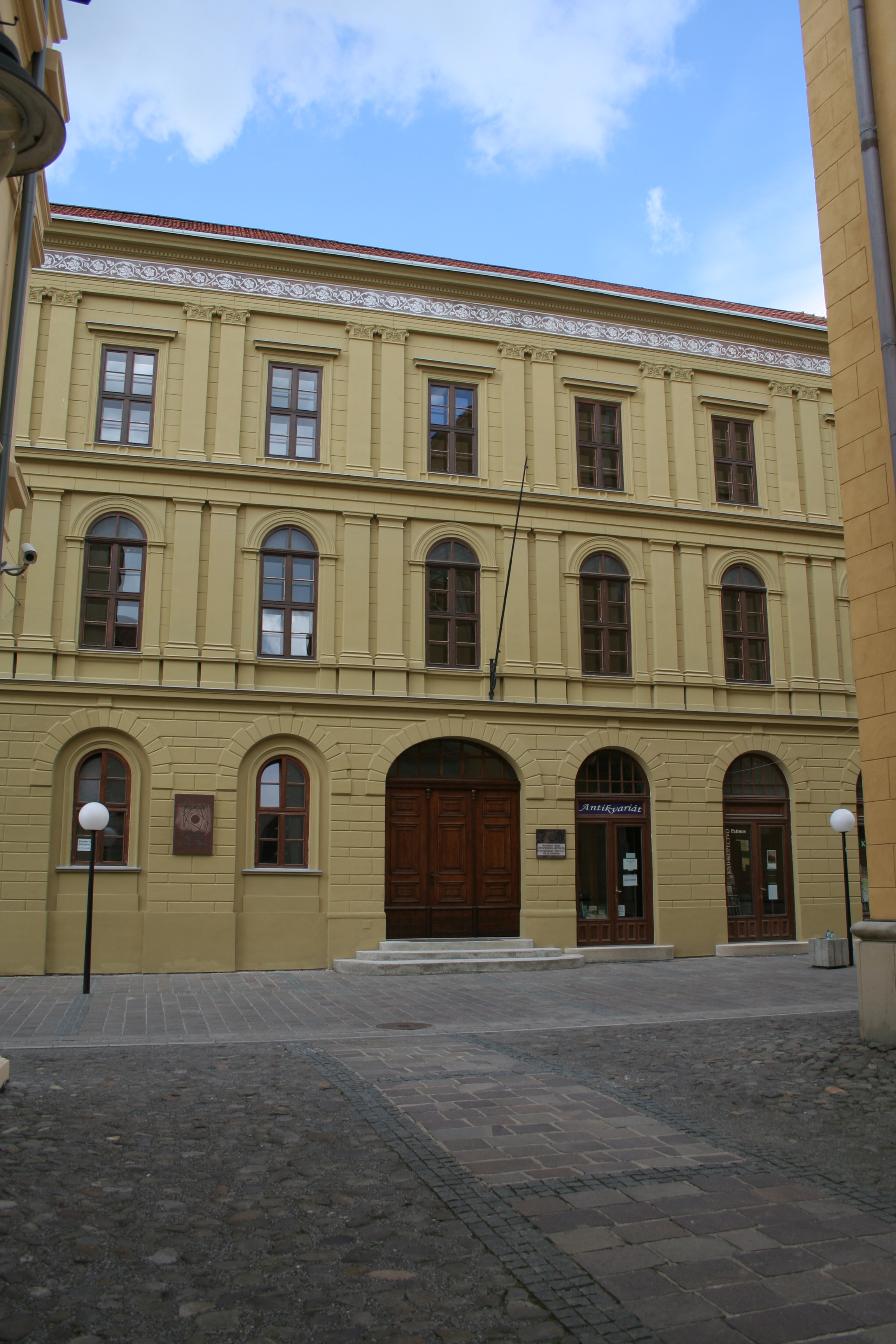Evangelical College

Evangelical College, which represents one of the most significant educational Protestant institutions in our cultural history, is situated in the vicinity of the Evangelical Temple of the Holy Trinity.
The decision to establish the Prešov Evangelical College was made by the deputies representing the Upper Hungary Protestant classes in their session in Košice on November 18th, 1665. The foundation stone of the building was laid and classes started in the autumn of the next year. The college was following the rich traditions of the humanistic city school at which, except for other famous personalities, the famous teacher, scholar and educator Comenius worked for a short time before. The Evangelical College was established according to the German model as a ten-class Secondary Grammar School including courses in theology and philosophy in the last years of study.
The outstanding professors from all over Hungary and from abroad, like Dr. Samuel Pomarius, philosopher and educator Elias Ladiver, writer and historian Ján Rezik, and Samuel Mathaeides taught at this school since its beginnings. Famous personalities can be found among the students of the above teachers, for example Emmerich Thokoly – a leader of the anti-Habsburg Resistance or Jacob Bogdani, a famous English Baroque painter. Because of the personalities teaching at this school as well as the modern methods of teaching, the school developed its quality to such an extent that the gentry decided to transform into an Evangelical University.
This development interrupted after the Wesselényi Conspiracy in 1671. The building was occupied by the military troops and was given to the Jesuits in 1673. Thus Evangelical College was cancelled and the professors were forced to leave the city. The situation changed as late as 1682 when Emmerich Thokoly, one of the graduates of the College, re-established the College. The Jesuits came back to the College after the defeat of the resistance. The College flourished during the period of the Ferenc II Rákóczi Uprising for the last time.
The capitulation agreement after the occupation of Prešov in December, 1710 secured the College’s continuing existence, but Queen Eleanor ordered the Evangelicals to leave the building the following year. The building was given to the Jesuits again then. The building served as the Jesuit Residence sixty years until the cancellation of the Jesuit Order in 1773. The building of the College and the neighbouring church thus became a state property.
Classes began in the original building of the College again in 1785. The year of 1804 is a milestone in the history of the College since in this year it was granted a status as the District College operating in the whole area of Potis district of evangelical church of the Augsburg Confession.
The College flourished alter the Austrian-Hungarian Settlement in 1867, especially in the 1870s. The College became a large educational institution including a complete Secondary Grammar School study, a Law and Theological Academy, and a Teacher Training Institute.
After the establishment of the Czechoslovak Republic in 1918, the pre-World War I nature of the College changed. Only an eight-class Secondary Grammar School remained. Classes were firstly conducted in two languages (Hungarian and Slovak), later, since the 1920’s, only in Slovak.
The old College building became a state property in 1950. It has been used by several institutions since then, but because of indifference and poor care of the building, it has gradually fallen into disrepair. According to the Restitution Law, the building became a property of the Evangelical Church of the Augsburg Confession in 1992 again.
The original building was a three-wing Renaissance building consisting of the yard in the middle, enclosed by a wall on the southern side, and an entry gate. A high attic wall with a typical attic gable dominated above the row of Renaissance windows. The Jesuits joined the original extended southern wing on the first floor to the northern choir of the neighbouring Evangelical church in 1716. The whole building was remodelled in a Baroque style in 1724. A large remodelling of the College took place from 1867 to 1887 and was supervised by an architect K. Benkó. During the restoration a connecting corridor, the second floor, as well as the whole building was remodelled in a Neo-Renaissance style. The assembly hall where the collection of historical books from the College Library can be currently found is the nicest room of the interior.
The monument commemorating the victims of Caraffa’s Bloody Trial in 1687, along with a memorial desk bearing the names of the victims, was built on the north-western corner of the building in 1908.